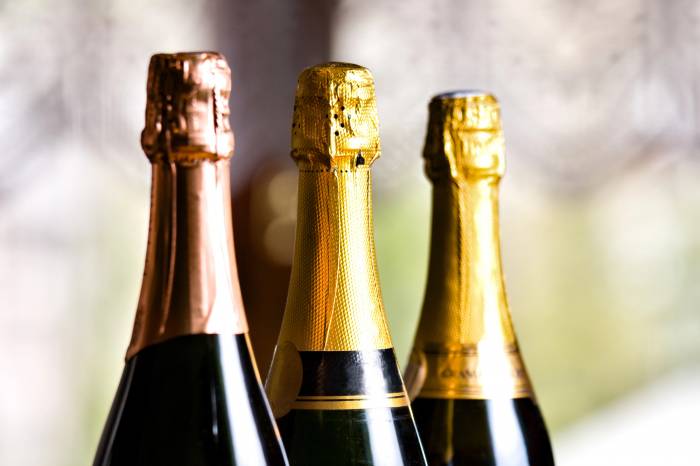27% of Americans Now Drink Sparkling Wine, Driven by Millennials and Gen Z Shifting Habits
Younger consumers in the US, France, and UK are making sparkling wine an everyday choice, boosting Prosecco and flavored varieties.
2025-11-27

Sparkling wine is showing resilience in major markets, even as the global wine industry faces ongoing challenges. Recent data from the IWSR Sparkling Wine Landscape Reports for France, the UK, and the US indicate that while overall wine consumption has struggled, sparkling wine is holding its ground, especially among younger legal drinking age (LDA) consumers. This shift is driven by Millennials and Gen Z, who are increasingly choosing sparkling wine for casual, everyday occasions rather than reserving it only for celebrations.
In 2024, sparkling wine volumes saw slight declines in the US, UK, and France. However, these drops were less severe than those experienced by still wine categories. The reports highlight that sparkling wine is becoming more integrated into daily life, with younger consumers leading this change. Luke Tegner, head of consulting at IWSR, notes that if this trend continues, sparkling wine could attract new drinkers and increase purchase frequency among existing fans.
The US market saw a 2% decline in sparkling wine volumes in 2024 but remains well above pre-pandemic levels. Between 2019 and 2024, the category grew at a compound annual growth rate (CAGR) of 4%. After a dip in participation from 2022 to 2024, the number of Americans drinking sparkling wine rebounded in 2025 to 27% of the LDA population—up from 21% in 2019. Prosecco and flavored sparkling wines have been the most dynamic segments. Prosecco grew at a CAGR of 7% from 2019 to 2024, while flavored sparkling wines expanded by 25%. Champagne remained stable over five years but dropped by 5% in 2024. Adam Rogers, North American Research Director at IWSR, points out that Prosecco and flavored sparklings benefit from accessibility and a range of price points, while Champagne’s premium image limits its appeal during times of economic uncertainty.
Younger American drinkers are also changing how they consume sparkling wine. While it remains popular for celebrations across all ages, Gen Z and Millennials are increasingly enjoying it with casual meals or while relaxing at home. This shift has allowed sparkling wine to take market share from red and white wines during informal occasions. However, after a post-pandemic boom in consumption frequency from 2021 to 2023, weekly consumption rates are now declining but still remain higher than before the pandemic.
In France, sparkling wine is outperforming still wine despite a slight decline of 1% CAGR between 2019 and 2024 compared to a much steeper drop for still wines. Participation rates are steady: about 78% of French adults drink sparkling wine at least once a year. The average age of French sparkling wine drinkers is falling as younger consumers become more engaged with the category. One in ten French sparkling drinkers is now between 18 and 24 years old.
Prosecco’s rapid growth in France may be slowing down; although volumes rose by 12% in 2024, this was below its five-year CAGR of 17%. Growth continued into early 2025 with an additional increase of 11%. Crémant d’Alsace has become Prosecco’s main competitor and remains stable, while the broader Crémant segment grew by 6% in volume in 2024 and by a CAGR of 3% since 2019. Champagne continues to lose ground in its home market: volumes fell by 7% in 2024 and have declined at a CAGR of -4% since 2019. All price bands were affected.
Arthur Derail, Senior Analyst at IWSR, says that while Champagne still holds prestige status among French consumers, its image has suffered regarding value for money and enjoyment. Younger consumers under age 45 are driving growth in other sparkling categories such as Limoux, Saumur, Crémant de Bordeaux, and Crémant de Loire. These groups also tend to drink sparkling wine more frequently than older generations.
In the UK, economic pressures persist but the sparkling wine market remains stable. Volumes declined by just 1% in 2024 and were flat over the previous five years—better performance than still wines, which saw a CAGR decline of -3%. The number of UK sparkling wine drinkers increased during the pandemic and has since stabilized. The demographic profile is getting younger as Gen Z and Millennials make up a growing share of consumers.
Prosecco appears to have reached its peak in the UK; volumes were flat in 2024 and declined slightly over five years. Consumption frequency among Millennials and Gen X has dropped. Champagne also saw a volume decline of -4% in 2024 despite some improvements in consumer perceptions. Patrick Fisher, Senior Analyst at IWSR, notes that buyers are trading down to standard-priced Champagne due to economic constraints.
English sparkling wine and Crémant are now leading growth in the UK market. Crémant posted double-digit volume gains in 2024. English sparkling wines continue to build their reputation for quality among Gen Z consumers but face challenges with availability.
Fisher adds that cocktails and spritzes have helped keep the UK’s sparkling wine category resilient amid economic difficulties. Younger consumers are more willing to try new products and have played a key role in boosting cocktail consumption since last year—especially drinks based on sparkling wines.
Across all three markets—US, France, and UK—the future of sparkling wine appears closely tied to younger LDA consumers who are reshaping when and how these beverages are enjoyed. As their preferences evolve toward more informal occasions and diverse product types, producers may find new opportunities for growth even as traditional categories face headwinds.
Founded in 2007, Vinetur® is a registered trademark of VGSC S.L. with a long history in the wine industry.
VGSC, S.L. with VAT number B70255591 is a spanish company legally registered in the Commercial Register of the city of Santiago de Compostela, with registration number: Bulletin 181, Reference 356049 in Volume 13, Page 107, Section 6, Sheet 45028, Entry 2.
Email: [email protected]
Headquarters and offices located in Vilagarcia de Arousa, Spain.
